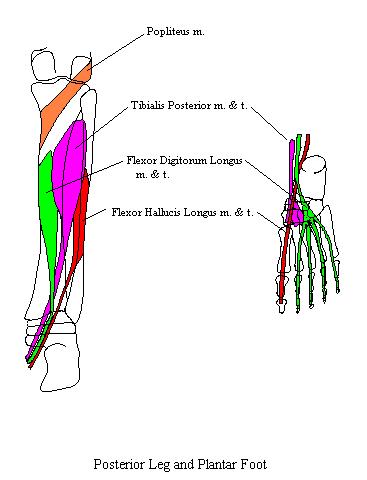

Lithotomy positioning during surgery or constricting casts or wraps can cause it. Over-exertion can lead to acute or chronic compartment syndrome. Arterial injuries, snake bite, burns, gunshot injuries, leakage from arterial and venous access, drug overdose, pulsatile lavage, contusions in hemophilia, infection, and intraosseous fluid replacement in infants are other causes for acute compartment syndrome. Other than fractures there are many other etiologies. Young males are about ten times more affected than females. Most cases of ACS occur following trauma. In older people with swollen limbs, a compartment pressure measurement is needed to rule out ACS.


The posterior compartment of the leg is affected commonly in non-fracture-related ACS group. The ACS in the elderly can be traumatic or nontraumatic. Whereas non- fracture-related ACS is common in the elderly with medical comorbidities. Fracture-related ACS is common in young males and its diagnosis is early. There can be fracture-related and non- fracture-related ACS. Any closed fascial space can be affected. The forearm, hands, feet, buttocks, thighs, and paraspinal muscles are other sites. Due to the bulk of muscles attached to the diaphysis of long bones, fractures through diaphysis are prone to develop ACS. A higher incidence of ACS is seen in grade 2 compound fractures than in grade 3A or 3B due to the phenomenon of self-decompression seen in higher grade open injuries. There is an equal incidence of ACS in closed and open fractures. About 2–9% of fractures of the tibia are associated with ACS. The incidence of ACS is 0.7 to 7.3 persons per 100,000 people. Paul Jepson in 1924 demonstrated ischemic contracture of muscles in animals. In 1881 Dr.Richard von Volkmann a German doctor first described ACS. If detected early and treated properly most of the sequelae of ACS are preventable. These can be reasons for litigations against treating doctors. Untreated acute compartment syndrome (ACS) can cause cosmetic problems due to muscle contractures, and functional problems due to neurovascular damages. The compartment syndrome can be acute or chronic. A decrease in the compartment volume, an increase in the contents of the compartment, or external pressure can cause it. In this chapter, we will see the etiologies, clinical features, investigations, and management of acute compartment syndrome of the extremities and the paraspinal region.Ĭompartment syndrome is a condition where the pressure within the closed osteo-fascial compartment raises above the perfusion pressure leading to irreversible tissue ischemia and necrosis. Untreated compartment syndrome can lead to neurovascular injuries and muscle contractures. The treatment of established ACS is emergency fasciotomy. Compartment pressure measurement is important for the diagnosis in unconscious and uncooperative patients. Exacerbation of pain on stretching the affected muscles and paresthesia are the common signs. Pain out of proportion to the injury is the most important symptom. The diagnosis in a conscious patient can be made based on clinical features. In older patients, medical causes can cause it. Trauma is the common cause of compartment syndrome in young patients. Any closed compartment in the body can be affected by ACS. Acute compartment syndrome (ACS) occurs when the pressure within the closed osteo-fascial compartment raises above perfusion pressure leading to irreversible tissue ischemia and necrosis.


 0 kommentar(er)
0 kommentar(er)
